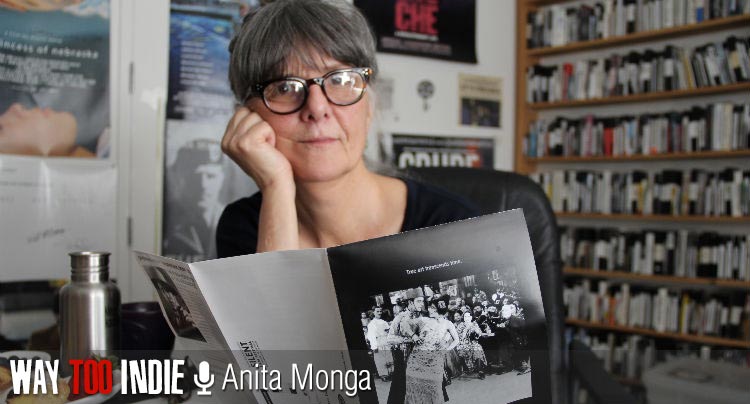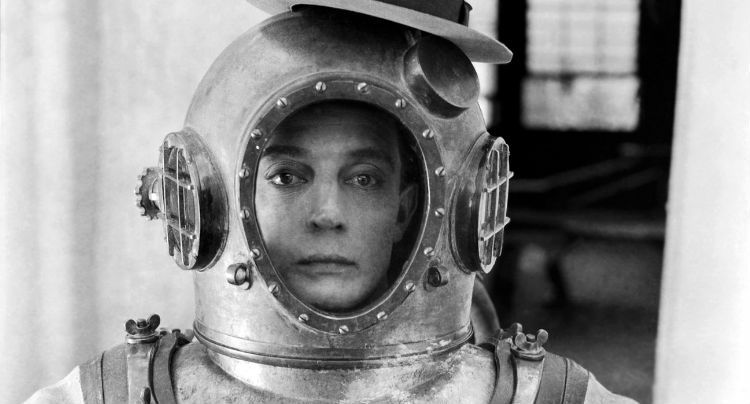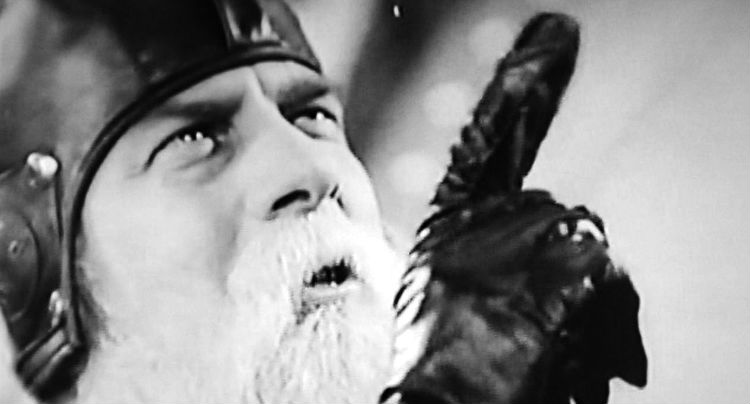Anita Monga On the 2014 SF Silent Film Festival

It’s time once again for San Francisco’s silent era Castro Theatre to do what it was made to do and show eager audiences once again why silent films define what movie magic really is. Starting tomorrow, Thursday May 29th, and running through Sunday, June 1st, the San Francisco International Film Festival will emanate from the Castro, harboring some of the rarest, most beautiful, classic films from the early days of cinema, before color, before sound, and before our computer screens and smartphones became plastered with shameless ads for movies we don’t care about. These are films from a time when filmmakers helmed their cameras with love.
The festival is bookended this year by two essential works in the story of early film. Rex Ingram’s sweeping epic The Four Horsemen of the Apocalypse, starring Rudolph Valentino, will open up the festival, a commemoration of the 100th anniversary of the Great War. Closing out the festival is Buster Keaton’s aquatic ballet The Navigator. Keaton’s fourth film contains some of his most intricately staged stunts, including a gorgeous underwater sequence. Also playing at the festival are films by Carl Dreyer, Yasujiro Ozu, Max Linder, the always entertaining Amazing Tales From the Archives program, an in-depth look into the world of film preservation, and many more.
We spoke to the festival Artistic Director Anita Monga about converting silent film newbies by getting them in the theater, the importance of thoughtful musical accompaniment, the genius of Keaton, the festival line-up, and more.
For tickets and more information, visit silentfilm.org

For every lover of silent film, there’s this constant struggle you have with your friends and family, trying to get them to give silents a try and get them into that theater.
Anita: It’s really hard to describe silent film. It’s so difficult. It’s a whole experience, with these beautiful, beautiful images that are lying dormant, because you can’t really watch a film without sound. I mean, you can, but it’s a very academic experience. A lot of the silent films on the internet have been badly transferred and paired with horrible music. We pay a lot of attention to the musical aspect of silent film. The films at the festival are examples of live cinema events, bringing these ancient texts to life. Film is the only medium where people think the past is not worth dredging up. People read books from the 17th century, read Shakespeare, and put on Shakespeare plays. That’s what we’re doing: making these films accessible to people who think that these films have nothing to say to modern audiences. We have a hindsight of 100 years to pick the very best. People transform when they see them, but it’s hard to get them into that auditorium.
What does silent film offer that modern film doesn’t?
Anita: Silent film is different. You can’t watch it on your cell phone and get everything there is to get about it. It requires having thoughtful music to be able to see these images. It gains a lot from being presented in the theater.
You’ll never see a modern film presented with live musical accompaniment. Silent films are an event.
Anita: Right. What we’re doing is really different. People understand that you can see something like Avatar on your computer screen months down the line after it hits theaters, but if you want to partake in this experience, you need to go to the theater and be immersed. People think silent films are boring because they’re old, but they are NOT! It’s the opposite. If we can get them in the door with an open mind, they’re converts. It’s a simple as that.
There’s something for everyone in this program. Harbor Drift is a story that’s so moving and harsh. It doesn’t sugarcoat the horrible economic reality that was Germany [in 1929.] We could use a little dose of that from our artists, too, with our world economy not on its firm footing.
Well, let’s get into the films playing at this year’s festival, starting off with Mr. Buster Keaton. Last year, I asked you to rank him, Chaplin, and Lloyd as far as who your favorite is, and it was an easy, quick answer from you.
Anita: Keaton, Chaplin, Lloyd.
You’ve got Keaton’s The Navigator playing at this year’s festival, which is right up there with my favorites from him. Where does it rank for you in his catalogue?
Anita: I love it. It’s one of the top ones for me, too. I think I love The Cameraman most…[trails off] Wait. No. I can’t even rank Keaton. Everything is so beautiful. Sherlock Jr. is so beautiful.
That was my jumping on point. It’s an easy one to get into, Sherlock Jr. The imagination on display in that film is unbelievable, and in The Navigator, you have the underwater sequence, which is incredibly cinematic.
Anita: Yes, incredibly cinematic! That was Keaton. He thought in cinema. He understood how to make the story move cinematically. He was the most cinematic of the comedians.
The underwater bit perhaps isn’t his most spectacular feat, but it’s easily one of his most challenging. You’ve also got The Four Horseman of the Apocalypse playing.
Anita: Yes. The Four Horseman is our commemoration of The Great War. It’s kind of remarkable. The film was made not far after World War I concluded. It was the first major world event that cinema commented on. Cinema and the history of that war are really intertwined. The Mont Alto Motion Picture Orchestra are doing the accompaniment, and it’s their 25th anniversary of being a group. They started out as The Mont Alto Ragtime and Tango Orchestra, and for people who don’t know, The Four Horsemen starts in Argentina, and it’s where Rudolph Valentino became “the Latin lover.” The whole idea of “the Latin lover” came from The Four Horsemen.
It’s his first starring role.
Anita: Yes, and it’s really what made him a star.
You’ve got an Ozu film as well, Dragnet Girl, which is actually a gangster film. It’s a bit of a departure from the style he’s known for, and there’s also a film from the great Carl Dreyer that’s a departure for him as well, The Parson’s Widow.
Anita: People know Dreyer from The Passion of Joan of Arc and from later, very beautiful, very somber work. This is a light-hearted departure for him, but it’s quintessentially Dreyer in its beautiful imagery and thoughtful filmmaking. It has a very funny sense of humor.
That’s atypical of him, but it’s funny that we say “departure”, because these films were actually early works in Ozu and Dreyer’s careers.
Anita: Right. They’re departures from what we know about them today. The other day, I re-watched Herb Ross’ Pennies From Heaven, and I knew Christopher Walken from later roles with David Cronenberg and others. Seeing him as a song-and-dance man felt like a departure from him, but it’s not. It’s a departure from what I thought I knew about him.
You also have on the line-up the Amazing Tales From the Archives program, which is always exciting.
Anita: Yes, and also along that line we have Serge Bromberg’s Treasure Trove. Serge Bromberg is a great raconteur, and he’s bringing some real surprises from his archive. If people are interested in seeing real rarities, presented by a cinema lover and great communicator, the Treasure Trove can’t be missed.
Seeing a Keaton film in the Castro Theatre is a wonderful experience, but what’s great about these rarity programs is that they’re truly a once-in-a-lifetime thing.
Anita: I really encourage people to stretch themselves. There’s not a film in here that I would say isn’t worth seeing. The Girl in Tails is hilarious. The early Sherlock Holmes film, The Sign of Four, was filmed in London, which is extraordinary. The Extraordinary Adventures of Mr. West in the Land of the Bolsheviks was filmed all around Moscow in the ’20s. Think about that. think about Red Square in the ’20s. How amazing is that?
I think the festival is best experienced as an all-day thing. You need to see at least two films in a row to get how truly fun it can be.
Anita: I’ve had people express it this way, and I think it’s true: It’s like entering a dream state. We balance the program very carefully; we’re not just showing one very dark, deep film after another. We’re not showing one comedy after another. It’s a varied experience and rewards sticking around.
It requires a lot of thought to present these films well. We’re presenting The Good Bad Man, which is a restoration. We’re running it at 17 frames per second. If you see the film at 24 frames per second, it’s going to seem extremely sped up and jerky. It requires thoughtfulness to present these things to express what the filmmaker had in mind. We also have to be thoughtful about the musical accompaniment so that it embraces and enhances the image.
What’s the state of film preservation?
Anita: There’s amazing work being done in preservation, aided by many things, like the internet. BFI put out a list of the “top lost films”, and those films are being found because of communication around the world. Ramona is a title that people were looking for for years and was found in the Czech archives and was recently restored. We have archivists coming to the festival from around the world.
Let’s run through what this year’s festival has to offer once more. For someone who enjoys action and adventure, they should watch…

Anita: The Good Bad Man. Also, the documentary The Epic of Everest, an actual attempt at reaching the summit of Everest. It’s the first look at Tibetan culture on film. Extraordinary. Also, Cosmic Voyage, which is a sci-fi film where they go to the moon.
For those who enjoy comedy…
Anita: Oh! Buster Keaton. Also, The Extraordinary Adventures of Mr. West in the Land of the Bolsheviks is highly hilarious.
For those who love dark dramas…
Anita: Harbor Drift and Under the Lantern are two German, expressionist titles that are so incredibly beautiful.
For kids?
Anita: Seven Years Bad Luck is by Max Linder, who a lot of comedians credited as an influence, including Charles Chaplin, who was a huge fan. Max Linder originated that mirror scene that the Marx Brothers used so effectively. A very funny French comedian. I’d advise some kids to come to Cosmic Voyage and The Navigator, but they’re late!
At least one of them isn’t a school night!
Anita: Right! Stay up late and come to Cosmic Voyage and The Navigator. Also, kids will love the Serge Bromberg program on Saturday afternoon.
